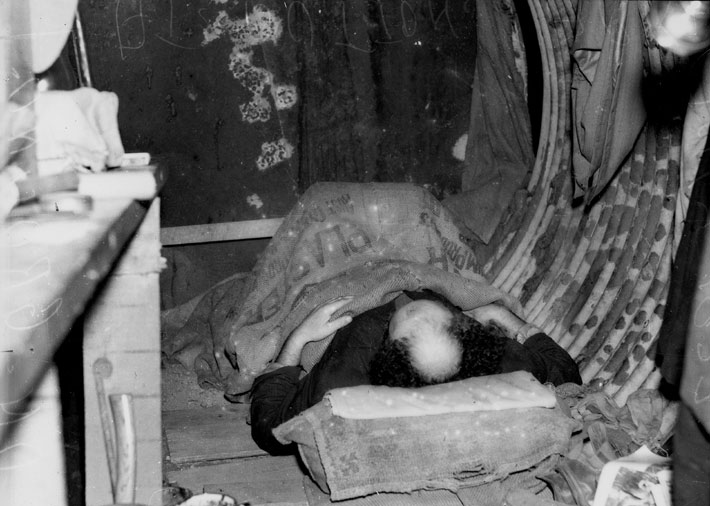 Homeless man at Dutton Park, Brisbane, 1937
Homeless man at Dutton Park, Brisbane, 1937
TLF ID R7998
This is a black-and-white newspaper photograph from 1937 showing a homeless middle-aged or elderly balding man lying in a makeshift bed on the floor of what appears to be a disused water tank lying on its side. He is fully dressed, despite being in a makeshift bed, using a hessian sack as a blanket and having an improvised pillow of rags. Some items of clothing hang from the inner wall of the tank and a tin mug and other personal items are partially visible on or near a temporary table.
